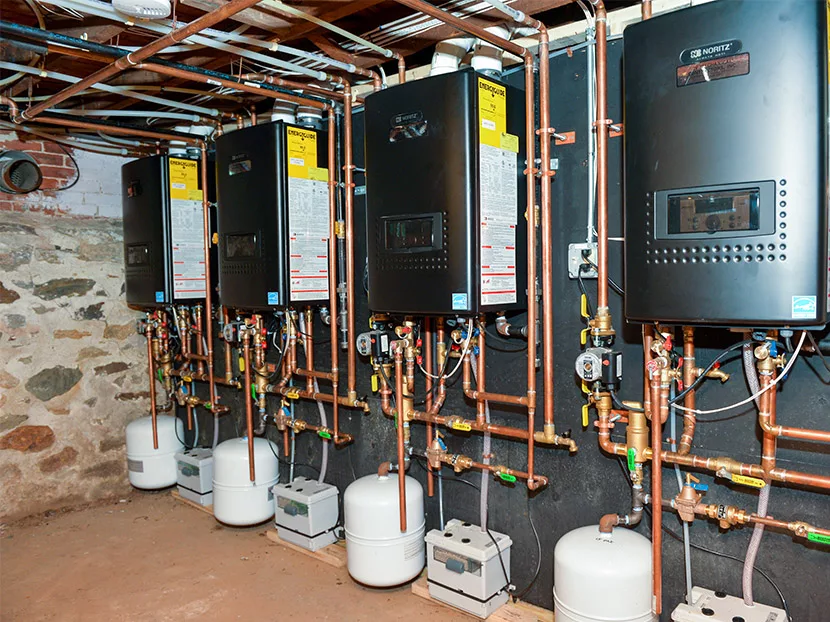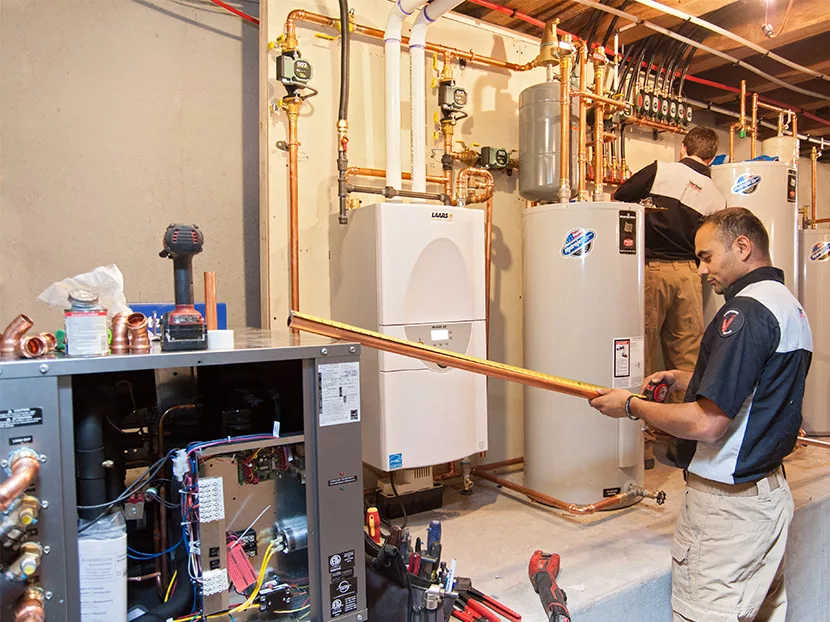Trend #1: Connectivity
Connectivity has been, and continues to be one of the biggest trends of 2018. Products that can connect to a smart device and that can be monitored remotely is a huge trend in consumerism overall, and the boiler industry is no exception.
Both consumers and installers are driving demand for wireless applications on new units, so they can access information and statistics and control operation of the equipment remotely, 24 hours a day. IoT is gaining momentum as customers keep adding technology solutions making their homes smarter. They want products with imbedded communication technology. They want smart thermostats. They want apps. They want to be connected.
Trend #2: Combi Boilers
Although not new in the industry, combi boilers are certainly making their way into U.S. homes. Owning one appliance that delivers heating and domestic hot water needs is a considerable advancement in the industry. The unit, which provides heat for both the central heating system and the hot water system instantly is now in demand.
Combi boiler sales grew more than 45 percent last year, and according to some of the manufacturers we spoke to, the combi units are going to grow in the near future at the expense of boilers and water heaters. As the economy continues to improve, a growing demand for custom homes will result in the sales of bigger residential boilers and combi units capable of providing additional heat for snow melt, radiant floor heat and more demanding bathrooms with showers that look like a car wash.
Trend #3: High Efficiency
This comes as a no-brainer, but with the new regulations push, combined with consumer demand, higher efficiency boilers have been trending for a while.
High efficiency boilers are a consistent trend because they use the least amount of energy in order to produce the greatest amount of heat.
However, Boyd from Weil McLain adds, “There also continues to be a large compelling need for standard efficiency cast iron products where the economics, existing distribution system design (emitters and required temperatures) and venting constraints, provide a better solution.”
So, although high efficiency is the trend, the industry is not quite ready to say goodbye to the mid- or standard-efficiency boilers.
Trend #4: Condensing Boilers
The industry sees a continuation from last year in sales growth of condensing boilers in both the residential and commercial market.
Condensing boilers go hand-in-hand with the high efficiency trend because they are able to provide ample heat for a home heating system while operating at lower temperatures.
In the U.S., there is a federal tax credit for the installation of condensing boilers (that are Energy Star-certified) and additional rebates from power companies in some states.
Trend #5: Fill in the Blank
Other trends that came up during our discussions include wall-hung boilers, fire-tube boilers, compact boilers, low-NOx boilers, as well as no-lead content and an outdoor temperature reset option. We’ll have to keep an eye out for these trends as the year progresses. Click here to keep reading.






